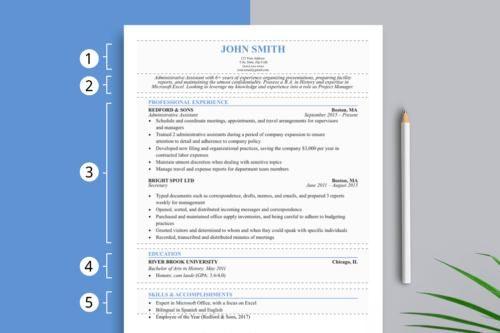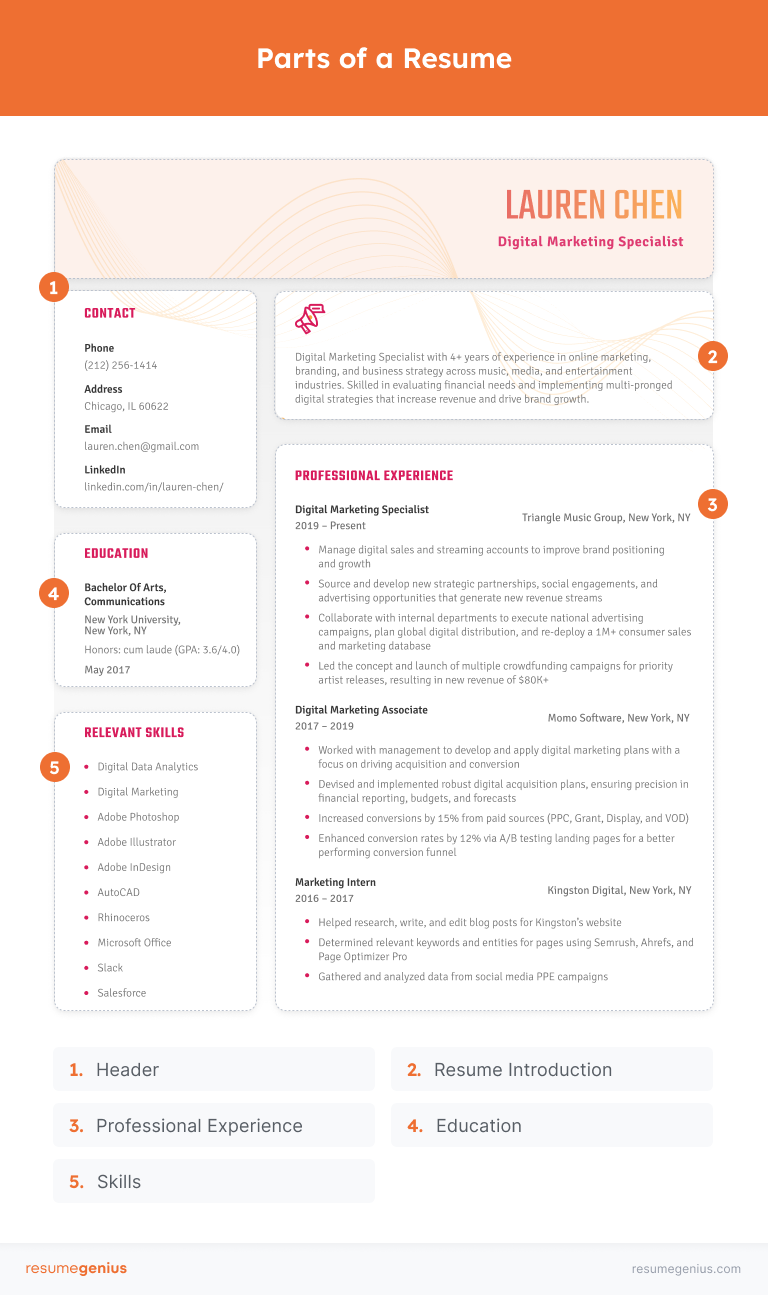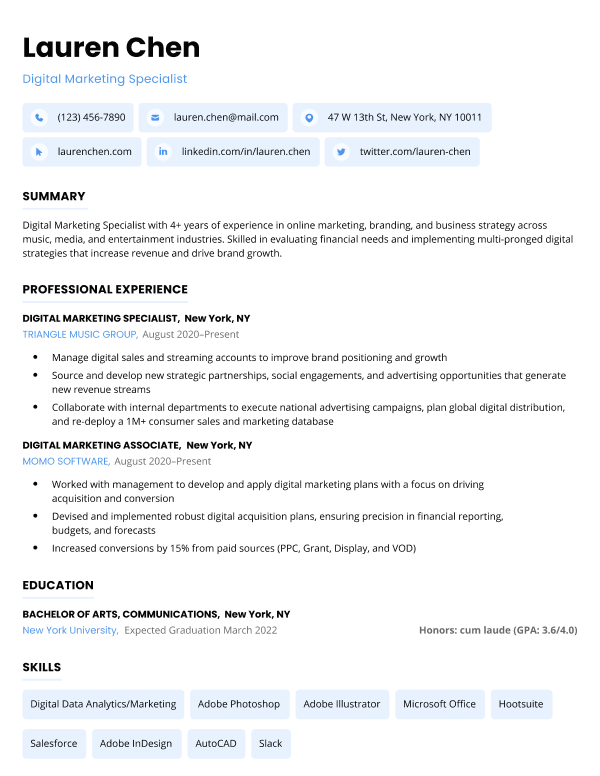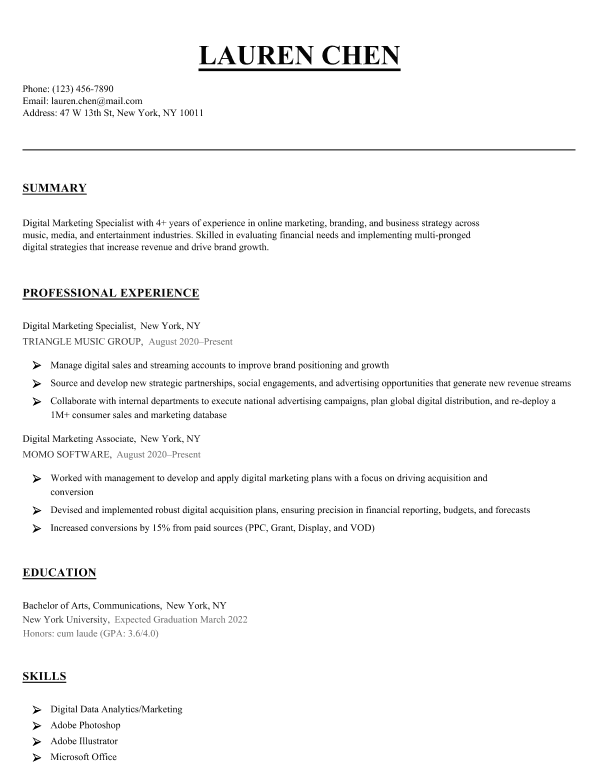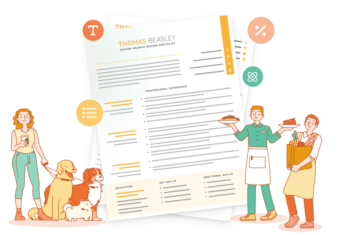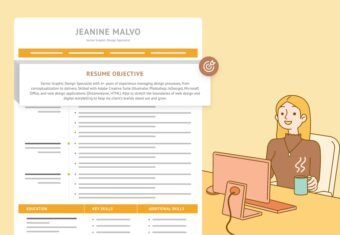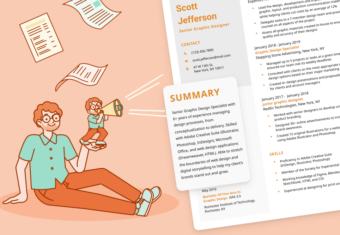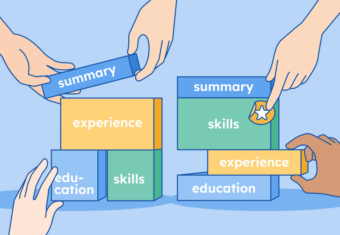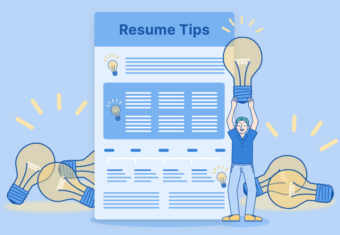The five most important parts of a resume are your:
- Contact information header
- Resume introduction
- Professional experience
- Skills
- Education
However, there are also many optional pieces of information you can add to your resume depending on your unique experience and the requirements of the job you’re applying to.
To hear Eva Chan, a Certified Professional Resume Writer, break down the different parts of a resume, skip to 1:24 in our Resume Basics video:
To help you make a great resume that contains all necessary information, we’ll cover the essential and optional parts of a resume and what to include in each section.
Our free-to-use resume builder can make you a resume in as little as 5 minutes. Just pick the template you want, and our software will format everything for you.
1. Header
The purpose of your resume header is to help the hiring manager quickly know who you are and how to reach you.
Here’s an example of contact details on a resume:

Your header should feature your name in a large, clear font, and include the following information:
- First and last name
- Phone number
- Mailing address (optional)
- LinkedIn (optional)
- Resume headline (optional)
If you’re a graphic designer, artist, or other professional creative, consider also including a link to your portfolio or personal website in your contact details if it’s relevant to the position you’re applying for.
2. Resume introduction
Your resume introduction is a quick three-to-four sentence summary for the hiring manager that details your experience, relevant skills, and other key qualifications.
You can think of your resume introduction as an elevator pitch. It’s likely the first resume section the hiring manager will see, so it should grab their attention immediately.
A resume summary is a good introduction choice for most job seekers, particularly those with previous work experience and notable career achievements.
If you’re not sure how to best highlight your relevant skills and accomplishments you can use a resume summary generator to write it for you.
Here’s an example of a resume summary from an electrician resume:
Skilled journeyman electrician with more than 6 years of experience installing, repairing, and maintaining low-voltage electrical systems. Have personally worked on and repaired 500+ houses during my tenure. Skilled in interpreting blueprints and schematics, and possess a Journeyman Electrician License issued in California.
3. Professional experience
The work experience section is one of the most important parts of a resume, and for most candidates will make up the bulk of their resume’s content.
When listing work experience, include the following information for each entry:
- Your job title
- Employer or company name
- Location (city and state)
- Employment dates
- Three to five bullet points describing your responsibilities and accomplishments
Additionally, for each work experience bullet point, begin by using an action verb, and use hard numbers when detailing your accomplishments to give hiring managers a clearer picture of what you achieved at your previous job.
Here’s a work experience example from a virtual assistant resume that includes action verbs and hard numbers:
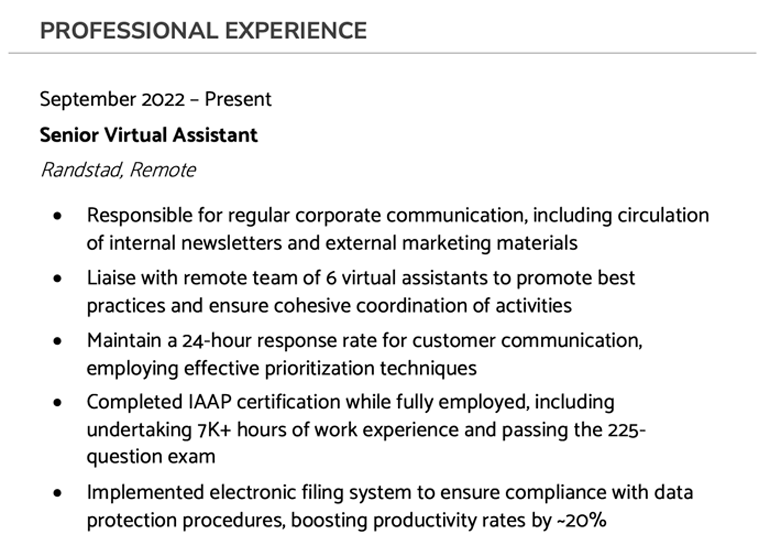
4. Education
The level of detail you add to your resume education section can vary based on how much work experience you have and the number of degrees you have.
For example, if you’ve just graduated from college and don’t have much work experience, the education part of your resume can be more detailed and include information that’s relevant to the job you want.
At minimum, your resume education section should include the following four items:
- School name
- Location
- Degree
- Graduation year
If you’re applying for grad school or have limited work experience, consider adding relevant coursework, extracurricular activities, academic awards, or even sororities or fraternities you were in to help demonstrate skills you developed while in school.
Here’s a properly formatted education section on a grad school resume, complete with relevant coursework and academic awards:

5. Skills
The skills section of your resume sums up your expertise and skill sets to the hiring manager in a short, easy-to-read list.
To write a strong skills section, list your most marketable abilities and include a mix of both hard skills and soft skills to show employers that you’re a dynamic, well-rounded candidate.
Take a look at this skills section example from a data entry clerk resume:

6 additional resume sections (optional)
Now that you have a good understanding of the required parts of a resume, knowing which optional sections to add can be a powerful tool to best display your diverse qualifications.
While none of these resume sections are required, they can help paint a fuller picture of who you are and what value you’ll bring to the organization if hired.
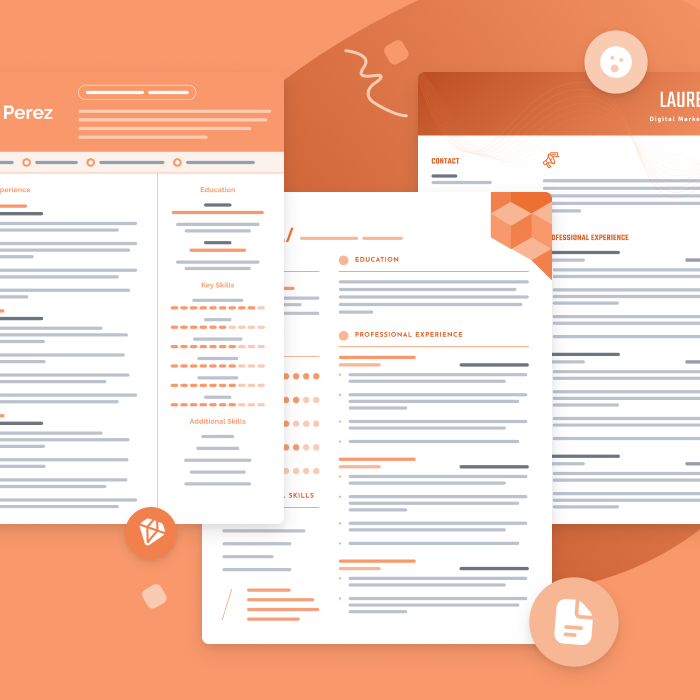
The best resume templates for 2024
One of the best ways to make your resume is by filling out one of our free resume templates. All our templates are designed by experts and free to download for Microsoft Word or Google Docs.
1. Training, certifications, and licenses
Many professions, such as personal trainers, coaches, or teachers, require outside training to be considered qualified for their jobs. So it makes sense to include certifications on a resume.
You can choose to include your training, certifications, or licenses in your education section or in its own dedicated section toward the bottom of your resume.
Here’s an example of an RN license on a nursing resume:

2. Language skills
Language skills can be a huge asset in many professions that require you to work with international customers and clients.
Typically, listing your foreign language abilities in your resume’s skills section will suffice, but if you really want to draw attention to it, consider making a dedicated “Languages” section.
It’s a good idea to note your proficiency level (native, fluent, proficient, etc.) next to each language you include.
Here’s how you might list language skills on a resume:
- Spanish (native)
- Arabic (advanced)
- French (beginner)
3. Projects & freelance work
Putting your personal projects or freelance work on your resume is a great way to portray your nontraditional work experience.
Consider making a dedicated section for projects if you have both traditional and freelance work experience.
If you’re a full-time freelancer, putting all of your projects or freelance work under your work experience section is fine.
Whichever method you choose, include the name of the project or client, the duration, and three to five bullet points detailing your responsibilities.
4. Volunteer work
Putting volunteer work on your resume is a good method for highlighting leadership and community involvement. It’s also a good way to emphasize unique skills you developed through volunteer activities.
When listing volunteer work, there are two methods. First, if your volunteer experience is highly relevant to the position you’re applying for, treat it the same as professional experience by listing it in your work experience section with three to five bullet points describing your responsibilities.
If your volunteer experience is less relevant to the position, but still worth highlighting, list it in a dedicated section toward the bottom of your resume with one or two bullet points describing what you did.
Here’s an example of how to list volunteer experience on a high school student’s resume:
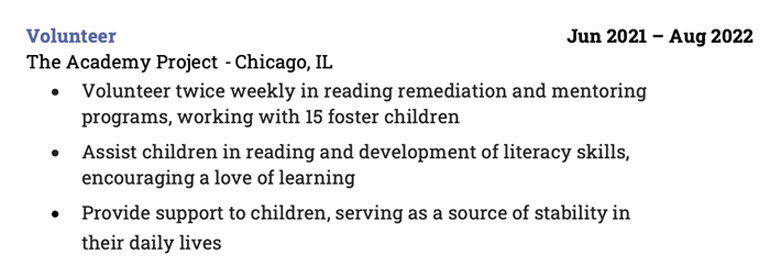
5. Awards and honors
Listing awards on your resume is an excellent way to add credibility to your qualifications and expertise.
When listing awards and honors, you’ll want to display the award name, date received, and purpose.
Academic awards should be listed in your education section in a bullet point underneath your degree. All other professional awards can be listed in a dedicated “awards” section.
Take a look at how to format awards on a resume:
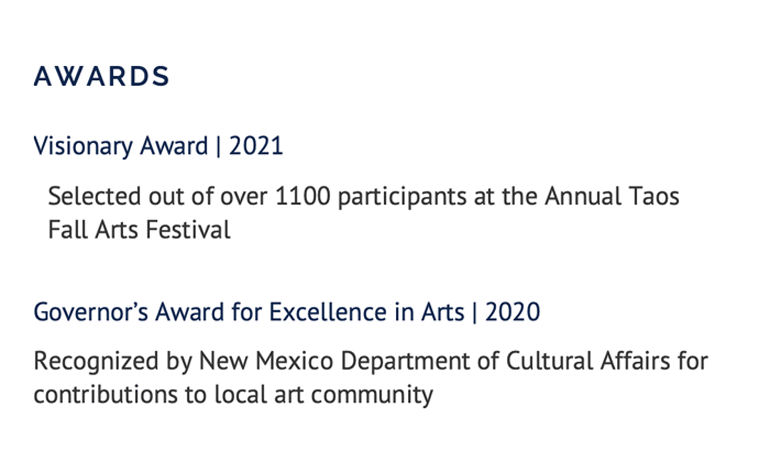
6. Hobbies and interests
Lastly, listing hobbies and interests on your resume is a good way to show off some of your additional skills and give your resume a personal touch.
That being said, hobbies and interests are less relevant to the job compared to other resume sections, so it’s best to leave them off if your resume already has a lot of information on it.
Here’s how you might format hobbies and interests on your resume:
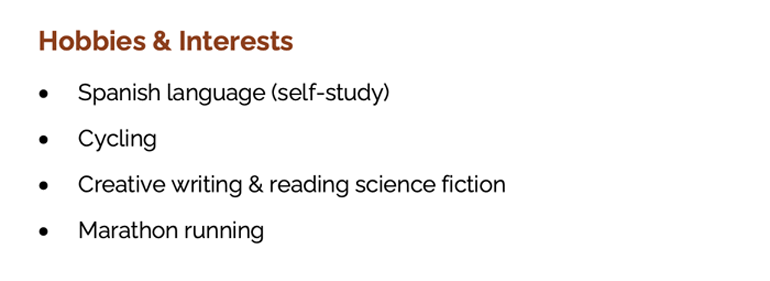
Click to rate this article
4.9 Average rating


